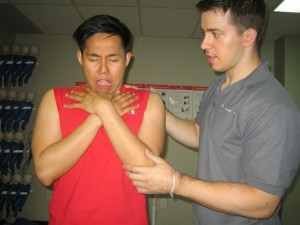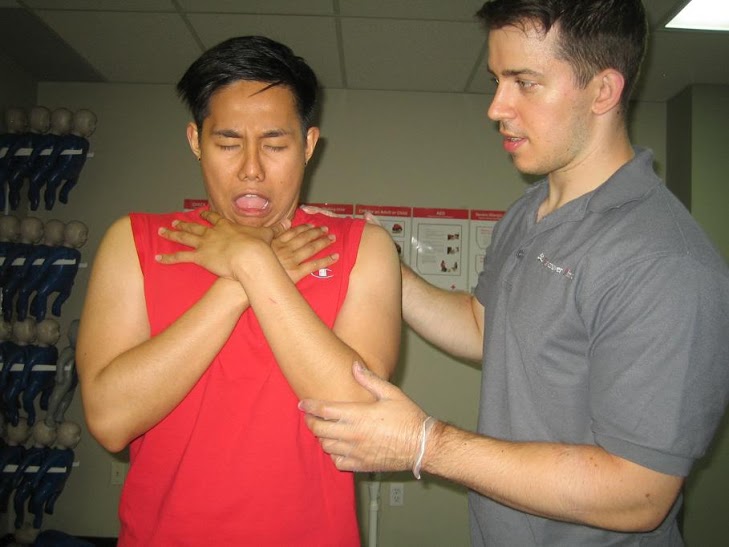If an individual sustained a rib fracture, certain movements such as twisting or bending the rib cage can cause pain. Even though the ideal treatment for a rib fracture is adequate rest and immobilization, depending on how large the damage is, one might be able to continue with a segment of workout routine. Prior to starting any activity, it is best to consult a doctor first for proper instructions in order to avoid further complications from arising.
Level of pain
The level of pain serves as a guide on the amount of exercise and physical activity that the rib fracture can endure. Before starting any exercise routine, a doctor should be consulted first to ensure that the rib has not damaged or punctured any of the underlying organs.
It is recommended to avoid any activity that places strain on the rib fracture such as resting on the affected side or engaging in any exercise that instigates pain. Remember that rest is the main treatment for broken ribs. Once the level of pain reduces, the individual can increase the amount of activity he/she engages in.

Preparation for activity
Proper preparation for an exercise routine requires strengthening of the rib cage with the help of shoulder blade squeezes. With this exercise routine, it focuses on stretching the adjacent muscles and ligament as well as helps the individual maintain good posture in order to continue with modified workouts.
Breathing
A vital portion of rehabilitation from a rib fracture is deep breathing. If the individual takes deep breaths, it might cause discomfort but he/she have to work through the pain in order to maintain enough lung capacity to engage in any kind of exercise routine.
Deep breathing exercises will also ensure that the individual will not suffer from a collapsed lung while working out. It is vital to sit or stand up straight and take a deep breath via the nose to fill up the diaphragm and exhale via the mouth. This should be repeated 5 times throughout the day. While exercising, take breaks to take a few deep, controlled breaths.
How to ease back to activity
During the initial weeks after the injury, the individual should use a sling in order to immobilize the ribs to prevent further damage. During this period, it is recommended to stick with low body exercise such as leg lifts and leg presses.
Walking on a treadmill can be continued but avoid engaging in any high-impact activity such as running. Once the sling is removed, resume upper body exercises in a steady manner. Gradually easing back into the normal routine will allow continued healing without losing a lot of momentum.

